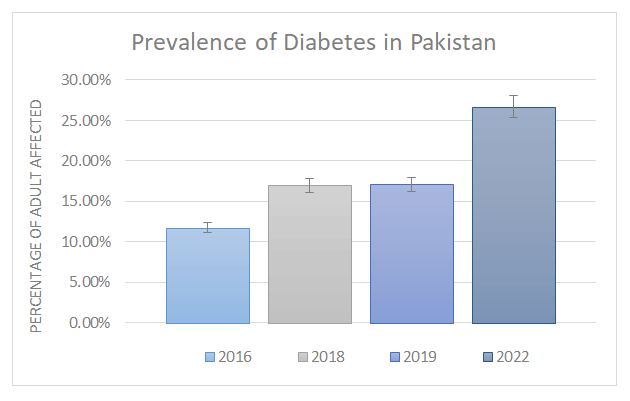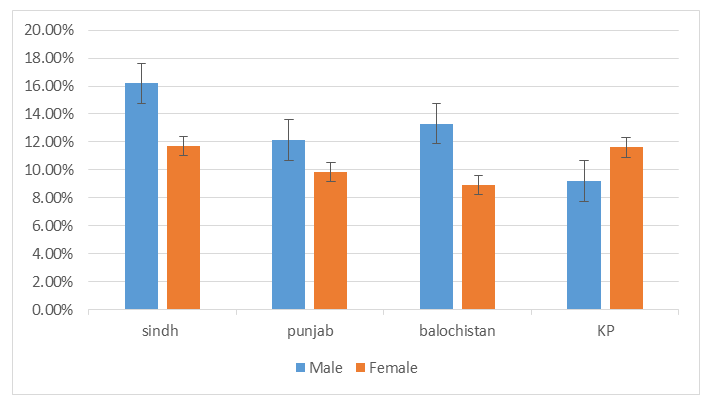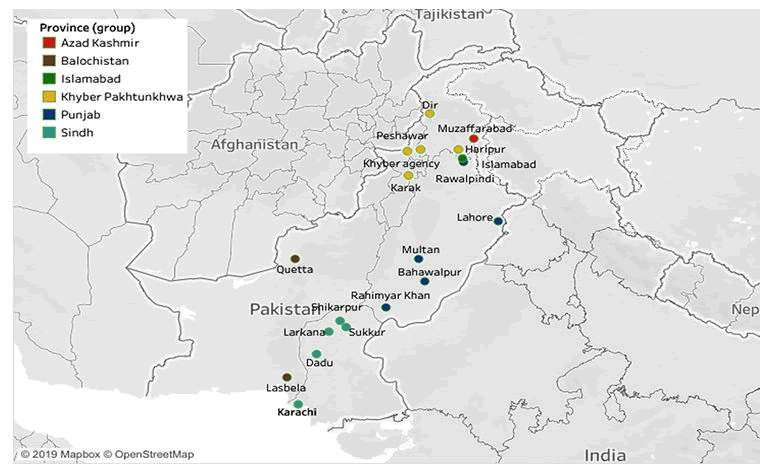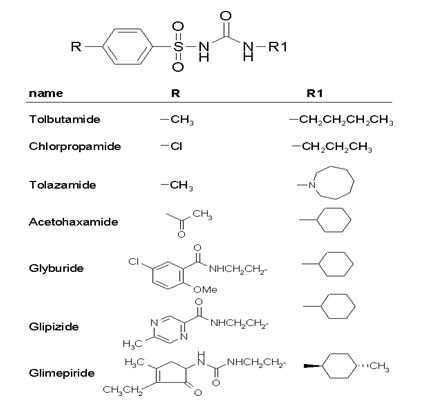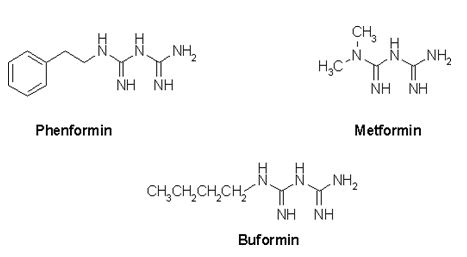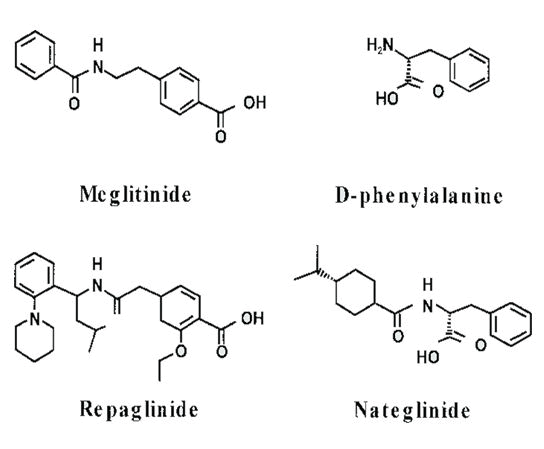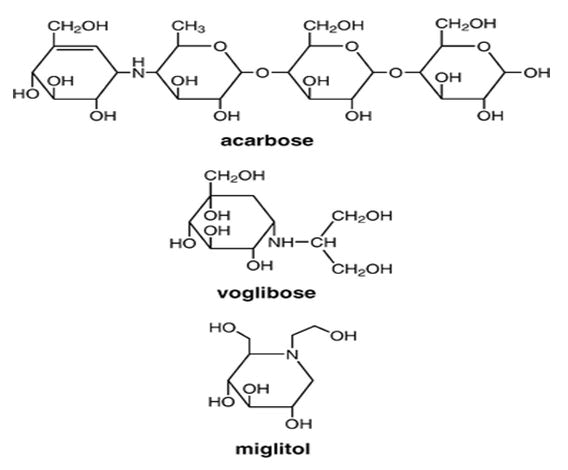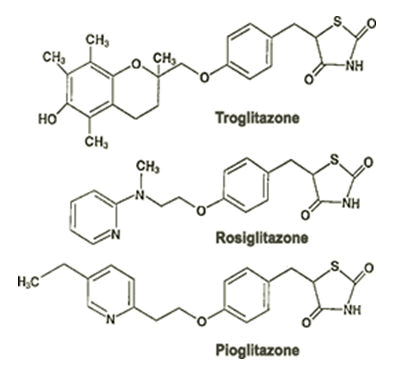Literature Survey of Traditional Medicine Plants and Prevalence of Diabetes in Four Provinces of Pakistan in both Male and Females
Received: 03-Mar-2023 / Manuscript No. JHAM-23-93860 / Editor assigned: 09-Mar-2023 / PreQC No. JHAM-23-93860(PQ) / Reviewed: 23-Mar-2023 / QC No. JHAM-23-93860 / Revised: 05-Apr-2023 / Manuscript No. JHAM-23-93860(R) / Published Date: 03-May-2023 DOI: 10.4172/2573-4555.1000383
Abstract
Diabetes mellitus is a worldwide disease and it grows all over the world in all developing countries. Pakistan is also a developing country and is the 36th largest country in the world. Diabetes mellitus has been spread all over in Pakistan; peoples from both (urban and rural) areas are affected from this disease. Different surveys were conducted at international level as well as in Pakistan to check the prevalence of diabetes mellitus. The aim of this study was to evaluate the time trend of diabetes and diabetes prevalence in Pakistan using a systematic review and meta analysis. A systematic literature search of EMBASE, pubmed, medline and the cochrane library was conducted between January 2000 and August 2020. prevalence estimates of diabetes using a random effects model. The existence of publication bias was tested by Egar regression. This systematic review was reported following PRISMA guidelines. Traditional medicines do not only treat the disease but also fulfill the requirement of nutrition and also have other benefits. Pakistan has 6000 species of plant among which 600-700 plant species are used medicinally. Northern areas of Pakistan have 3000 species of plants among which 124 species are medicinally very important. These surveys were made on both male and female from both rural and urban areas of Pakistan from all four provinces. From all these surveys the current prevalence of diabetes type 2 in Pakistan is 11.77%. In which 11.20% exist in males and 9.19% exist in females. The mean prevalence in all four provinces is: The prevalence of type 2 diabetes in urban areas is about 14.81% and in rural area is about 10.34%. These prevalence in both males and females under the age of 25-45 years. According to international diabetes federation, 26.7% of adults in Pakistan are affected by it in 2022. The total number of diabetes cases is about 33,000,000.
Keywords
Diabetes prevalence in Pakistan; Medicinal plant; Systematic review; Traditional medicines
Introduction
Nowadays human world is under the effect of many problems among these the health issues are very common. People are affected by a number of diseases which have had affected human health badly, among which diabetes mellitus have become major health problem [1].
Diabetes mellitus is very common and prevalent disease which has affected large number of peoples of both developed and developing countries. About 25% of the world population is affected by this disease. According to WHO, diabetes caused almost 1.5 million deaths worldwide in 2012. It is a group of metabolic diseases characterized by high glucose level in the blood due to defects in the body’s ability to produce or use insulin. It is also defined as by the level of hyperglycemia which increases the risk of microvascular damage e.g., retinopathy, nephropathy and neuropathy etc. It also increases the risk of macrovascular complications e.g., heart disease, stroke and vascular disease etc. Diabetes is the shortened name for diabetes mellitus. In diabetes mellitus the term diabetes is derived from Greek word meaning siphon pass through while mellitus is derived from Latin word meaning honeyed or sweet [2].
In the past, about 3000 years ago, ancient Egyptians described the clinical features similar to diabetes mellitus for the first time. Aratus of cappadocia in the period between (81AD-133AD) coined the term diabetes. Later, in 1675 Thomas Willis from Britain was added the word mellitus with diabetes after noticing of sweetness in urine and blood of the patients. Ancient Indians were first noticed it, and Dobson from Britain was confirmed it in 1776 [3]. In 1857, Claude Bernard from France gave the concept that diabetes is due to excess production of glucose in the blood while Mering and Minkowski from Austria in 1889 described the role of pancreas in pathogenesis of diabetes. In the 17th century the diagnostic method for diabetes was that to check if the patient’s urine had a sweet taste and this method was used till 20th century. Low calorie diets were given to these patients for keeping their glucose level in normal range but this method left them weak and near to starvation. After discovery of insulin in 1921, doctors of Canada used insulin for the treatment of diabetic patients and bring their high glucose level to normal [4]. Now, in the 21st century, the researchers are trying to discover remarkable and the safer methods for treatment of diabetes and perhaps new discovery will be waiting around the corner [5].
Materials and Methods
We systematically searched pubmed, medline, EMBASE, cochrane library, and Pakistani journals online websites for articles e.g journal of Pakistan medical association journal of the college of physicians and surgeons of Pakistan; Pakistan journal of medical sciences etc.
from January 1995 to August 2018. Using the MeSH headings, the terms diabetes mellitus, prediabetes, Impaired Glucose Tolerance (IGT), risk factors, prevalence, glucose abnormalities, glucose intolerance and Pakistan as well as their variants were explored. Results were described using the Preferred Reporting Items for Systematic and Meta-Analyses (PRISMA) guidelines [6].
Classification of diabetes mellitus
WHO (World Health Organization) has given different systems for the classification of diabetes mellitus. In 1965 different categories (age wise) were used for diagnosis of diabetes [7]. Then in 1980 a widely accepted system of classification for diabetes is given which was further updated in 1985. In this system, diabetes is mainly classified or categorized into two major classes; one is Insulin Dependent Diabetes Mellitus (IDDM) also called type-1 and second one is Non Insulin Dependent Diabetes Mellitus (NIDDM) or type-2. Besides these Gestational Diabetes Mellitus (GDM) or type-3 and other types (impaired glucose tolerance) etc. was added. A new class of diabetes was also introduced with the name of Malnutrition Related Diabetes Mellitus (MRDM).
Status of diabetes mellitus in Pakistan
Diabetes mellitus is a worldwide disease that grows all over the world in all developing countries. Pakistan is also a developing country and is the 36th largest country in the world. Diabetes mellitus has been spread all over in Pakistan; peoples from both (urban and rural) areas are affected from this disease. Different surveys were conducted at international level as well as in Pakistan to check the prevalence of diabetes mellitus. According to the international survey named International Diabetes Federation (IDF), Pakistan is 10th in number out of 221 countries of the world which are more affected from diabetes mellitus [8].
About 463 million adults worldwide have diabetes and 90% of them suffer from type-2 diabetes. Pakistan ranks third around the world for diabetes prevalence behind China and India, according to a report in "The News". In Pakistan, the prevalence of diabetes was 11.77% in 2016, 16.98% in 2018, and 17.1% in 2019 respectively as shown in Figure 1. In Pakistan, adults would have diabetes in 26.7% of cases by 2022, based on the international diabetes federation reportings. There are around 33,000,000 instances of diabetes worldwide [9].
Three national surveys were conducted in Pakistan to check the prevalence of diabetes in Pakistan [10]. The first national survey (National Diabetes Survey of Pakistan NDSP-I) was conducted from which was completed in four phases and the data was published in 2007.
The second National Diabetes Survey of Pakistan (NDSP-II) was conducted in 2016-2017 and the third national Diabetes Survey of Pakistan (DPS-PAK) was conducted in 2017.
All of these surveys were conducted on male and female population from Pakistan's four provinces, both urban and rural. From all these surveys the current prevalence of diabetes type-2 in Pakistan is 11.77%. In which 11.20% exist in males and 9.19% exist in females. The mean prevalence in all four provinces is:
• Sindh province: 16.2% in males and 11.70% in females
• Punjab province: 12.14% in males and 9.83% in females
• Baluchistan province: 13.3% in males and 8.9% in females
• Khyber Pakhtunkhwa: 9.2% in males and 11.60% in females
The prevalence of type 2 diabetes in urban areas is about 14.81%, and in rural area is about 10.34%. These prevalence in both males and females is under the age of 25-45 years (Figure 2) [11].
Geographic mapping of surveyed districts
Among 12 chosen studies, a total of 19 districts were surveyed at minimum once. The geographical map in Figure 3 demonstrates that the survey covered five districts in each of the three provinces of Punjab, Sindh, and Khyber Pakhtunkhwa. Two districts of Balochistan, one district of Azad Jammu and Kashmir and one district of the Islamabad capital territory were among the other locations studied (Figure 3) [12,13].
We systematically searched different articles in pubmed, medline, EMBASE, cochrane library and Pakistani journals online websites. From January 1995 to August 2018. Using the MeSH headings, the terms diabetes mellitus, prediabetes, Impaired Glucose Tolerance (IGT), risk factors, prevalence, glucose abnormalities, glucose intolerance and Pakistan as well as their variants were explored. Results were described using the Preferred Reporting Items for Systematic and Meta-Analyses (PRISMA) guidelines (Table 1) [14].
| No. | YOP | Period of inclusion | Setting | Province | % RR |
% FM |
% M | % OW | % OB |
% H |
|---|---|---|---|---|---|---|---|---|---|---|
| 1 | 1995 | Feb to Mar 1994 | Ruler | Sindh | 76.4 | NA | NA | 62.23 | NA | 49.39 |
| 2 | 1999 | NA | Ruler | KP | NA | 80 | 20 | 49.28 | NA | 21.22 |
| 3 | 2002 | NA | Ruler | Baluchistan | NA | 67.02 | 33 | NA | 38.3 | 20.27 |
| 4 | 2011 | Feb 2009 to Feb 2010 | Ruler | Baluchistan | NA | NA | NA | NA | NA | 54.27 |
| 5 | 2016 | NA | Ruler | KP | NA | 49.2 | 50.8 | NA | NA | Na |
| 6 | 2009 | Feb 1, 2007 to Jan 31, 2008 | Urban | Punjab | NA | 49.3 | 50.8 | 17.92 | 26.08 | NA |
| 7 | 2010 | July 8 | Urban | Punjab | NA | 73.14 | 26.9 | 14.5 | 16.17 | NA |
| 8 | 2014 | Jan 2006 to Dec 2008 | Urban | Sindh | NA | NA | NA | NA | NA | NA |
| 9 | 2016 | May to Sep 2014 | Urban | Punjab | NA | 55.2 | 44.8 | 34.4 | 35.4 | 50.3 |
| 10 | 2017 | Jan to Aug 2016 | Urban | Punjab | NA | 80.65 | 19.4 | 33 | 42 | NA |
| 11 | 1999 | Mar to Jun 1995 | Both | Baluchistan | 77.5 | 69 | 30.9 | 38.28 | NA | 14.03 |
| 12 | 2007 | NA | Both | All 4 provinces | NA | 65.15 | 34.8 | NA | NA | 42.45 |
| 13 | 2010 | NA | Both | Punjab | 50.72 | 56.05 | 44 | 32.46 | NA | 47.57 |
| 14 | 2018 | Feb 2016 to Mar 2018 | Both | All 4 provinces | 87 | 56.1 | 43.9 | NA | NA | 47.4 |
Note: YOP=Year of Publication, RR=Rseponce Rate, FM=Female, M=Male, OW= Over Weight, OB=Obesity, H=Hypertension
Table 1: Characteristic of 14 studies included in the analysis.
Medicinal plants in Pakistan
Many peoples in Pakistan relay on traditional medicines for their health care needs. A number of medicinal plants are found everywhere in different areas of Pakistan. From these medicinal plants a number of traditional medicines and herbal medicines are prepared. Pakistan has 6000 species of plant among which 600-700 plant species are used medicinally. Northern areas of Pakistan have 3000 species of plants among which 124 species are medicinally very important [15]. In Pakistan, about 54 families of plants are used to treat different neurological diseases e.g., alzheimer, anxiety, insomnia, and migraine etc. Among these plant families, Solanaceae family is mostly used upto about 22.22%, Asteraceae family about 12.96%, other families are contributing 9% e.g.,-5.5% e.g., Poaceae, Cucurbitaceae, and Rosaceae etc. These plant species are found in different regions of Pakistan and contribute to therapy of various disease as medicines [16].
Results and Discussion
Role of traditional medicines in diabetes
Traditional medicines (other than pharmaceuticals), play a very vital role in treatment of diabetes without creating any severe problems to the body. Traditional medicines mostly include common food, plants, seeds, fruits, herbs and extracts of these. They do not only treat the disease but also fulfill the requirement of nutrition and also have other remarkable benefits [17]. Some of the traditional medicines used for diabetes are:
Malva sylvestris
It is a common Cyprus plant, commonly known as common mallow and cooked in various ways for eating. It is a very effective traditional medicine and treat many dermatological disorders e.g., diabetes, depression, gestational problems, respiratory infections, and also stimulate immune system. Recently studied, it is also used for prevention from nephrotoxicity [18].
Side effects: There is no certain side effects for herbal medicines reported, as It is mostly safe when taken by mouth as a medicine but however in some peoples the cyprus plant causes stomach problems e.g., vomiting, diarrhea, nausea and indigestion etc
Myrtus communis
Its common name is myrtle and its leaves are used traditionally for treatment of hypertension, dyslipidemia and diabetes. The extract of leaves is used as hypoglycemic agent for diabetes [19].
Side effects: The extract of leaves is usually safe when taken by mouth but their oil is not safe when taken by mouth because it contains chemicals which lower down the blood pressure, elevate blood circulation disorders and some other problems etc.
Aloe vera
Aloe vera is a common plant and used for treatment of many problems as health care. Being used to treat the diabetes, it protects and repairs the beta cells inside the body which produce insulin for body. Aloe vera pulp juice and capsules are also used for the treatment of disease [20].
Side effects: Common side effects of Aloe vera are: Hypoglycemia, skin itching, stomach pain and some kidney problems etc. if used it for long time.
Ginger
Ginger is a common herb, used from many years as a traditional source of medicine to treat various diseases. It is used to treat digestive and inflammatory issues. Besides this it is also used to treat diabetes. It reduces the blood sugar level inside the body. Ginger could be used as a raw food, as powder form, in capsules and also used as a constituent in a drink etc.
Side effects: Some common side effects are heartburn, diarrhea, burping, increase menstrual bleeding and stomach discomfort.
Nigella sativa
It is commonly known as kalonji and its seeds are used for treatment of diabetes. It is also used to treat dyslipidemia and gastrointestinal disorders. Nigella sativa seed powder is used as hypoglycemic agent. While extract of nigella seeds are also used for treatment of a disease [21].
Side effects: Black seed oil and powder both are safe in most peoples, in some peoples it causes allergic reactions, stomach problem, vomiting, and constipation.
Role of modern medicines in diabetes
Diabetes mellitus is such type of disease that cannot be cured completely in most cases. Most of diabetic patient cannot get rid from diabetes throughout in there life. However, due to some medications and health care many of them maintain their lives in healthy condition to some extent. Modern medicines are also playing a very important role in curing of diabetes. Many new medical techniques are developed which are helpful for managing this disease. In modern medicines, the most important development for diabetes is insulin which is important for survival of type 1 diabetic patients, where these patients are unable to produce their own insulin. Besides this, many other modern medicines are also used for diabetes which are synthesize from the synthetic chemicals. The first oral drug used for treatment of type 2 diabetes is metformin (glucophage), it is a backbone of all oral drugs which are used for diabetes. Other drugs are also used for diabetes added with metformin. Modern medicines are good in way of treatment of disease, it treats all the possible symptoms of a disease but the main disadvantage of the modern medicines is that it causes other problems in a patient. Some of common modern medicines used for diabetes are.
Sulfonylureas
The class of organic compound in which sulfur is the basic element of all sulfonylurea’s which are used for diabetes treatment. Sulfonylureas are present in some anti diabetic drugs for example: Amaryl (glimepiride), glucotrol (glipizide), and glyburide diabeta, micronase and glynase prestab etc. All these forms offered a potential effect against diabetes from many decades, being considered as effective, safe and affordable. But the long term and continued usage of these always persist some health concerns (Figure 4).
Sulfonylureas stimulate the pancreatic β-cells to secrete more insulin for body and by this way blood glucose level will decreases. These types of drugs are useful for type 2 diabetes where the insulin production becomes decreases but not useful for type 1 diabetes where’s the pancreas is fail to produce insulin side effects: Sulfonylureas are not useful for both types of diabetes and not recommended for obese peoples. Possible side effects are hypoglycemia, allergic reactions to skin, stomach problems, and dizziness etc.
Biguanides
Biguanides are the group of oral drugs which are used for the diabetes to reduce the blood sugar inside the body. Biguanides works inside the body as to stop the glycogenolysis in the liver to prevent the further production of glucose from glycogen, fats and amino acids, increase the sensitivity of body cells towards insulin so cells are able to use insulin and glucose will transfer towards tissues, and reducing the absorption of sugar by the intestine so less sugar will absorb from food. The one of the most important and well known biguanide which is used all over the world for diabetes type 2 treatment is metformin which was introduced in1957 (Figure 5).
Side effects: By single use of metformin have lower chances of side effects as compare to use in combination with insulin or with some other diabetic drugs. But if metformin is used for longer time then severe complications are taking place e.g., alzheimer’s disease and parkinson’s disease. Metformin also lowers the level of vitamin B-12 inside the body. Other side effects are; bloating, gas, diarrhea, stomach problems, trouble breathing, get dizzy or faint, changes in heartbeat, and little appetite etc.
Meglitinides
Meglitinides are also used as oral drugs for diabetes type 2 patients and these drugs are mostly useful for those persons who have not a proper time for meal due to the busy work schedules. Because the meglitinides works after the meal, it is taken 15 minutes before the meal which are then lowering the blood glucose level after the meal. The primary work of meglitinides is to stimulate the β-cells of pancreas to release the insulin. Meglitinides includes repaglinide and nate glinide drugs which was introduced in 1997 and 2000 respectively (Figure 6).
Side effects: Meglitinides are useful for type 2 diabetic patients only not recommended for type 1 diabetic patients and also have some side effects if not used properly, common side effects are; hypoglycemia, sweating, lightheadedness, and confusion etc., while severe side effects include, severe hypoglycemia, diabetic coma, and loss of consciousnessetc.
α-Glucosidase inhibitors
Alpha-glucosidase inhibitors are oral drugs used for the treatment of type 2 diabetes. This classofdrugs includes acarbose (Precose), miglitol (glyset) and voglibose. Alpha-glucosidase inhibitors inhibit the alpha glucosidase enzyme which is present inside the body mainly in intestine. This enzyme is useful in breakdown of carbohydrates and starches etc. So, alpha glucosidase inhibitors block the breakdown of the starchy foods such as bread, potatoes, and pasta etc. by inhibiting the enzyme. From this way glucose is not released too much in the blood. And blood glucose levels remains low throughout the day even after the meal (Figure 7).
Side effects: Some side effects of alpha glucosidase inhibitors are: Diarrhea, belly pain, gas, and upset stomach etc. These drugs are not recommended for those persons who have already some severe problems because these drugs increase the risk of severe complications.
Thiazolidinediones
Also known as glitazones, are a group of anti diabetic drugs which includes; pioglitazone (actos), rosiglitazone (avandia) and troglitazone. Thiazolidinediones are insulin sensitizers that stimulate the insulin action and increase the insulin sensitivity towards cells. So, ability of pancreas should increase through these drugs and by this blood glucose level should decreases. Glitazones also help in lowering the blood pressure and helpful in lipidmetabolism (Figure 8).
Side effects: Some common side effects of glitazones are: Weight gain, eyesight problems, reducing sensation of skin, chest pain and infections, and some allergic reactions etc. while some severe side effects are liver failure, heart problems, anemia, bone fractures, anemia, and macular oedema.
Conclusion
To the best of our knowledge, this is the first systematic review and meta analysis to determine the traditional medicines found in Pakistan and prevalence of diabetes in four provinces of Pakistan. The overall prevalence of diabetes was shown to be 14.62% (based on 49,418 individuals) indicating that the prevalence of diabetes has increased significantly in Pakistan. Furthermore, the studies selected in this meta analysis cover almost all geopolitical zones of Pakistan, making it possible to determine regional differences in diabetes prevalence. Diabetes affects the entire country, with the highest prevalence in sindh province and the lowest in khyber pakhtunkhwa. Increasing age, family history, high blood pressure, overweight are important risk factors for diabetes in Pakistanis. This number is alarmingly high and growing with each passing year there is also reason to believe that many patients go undiagnosed, leading to a high risk of actual spread and complications due to the absence of treatment. In Pakistan, about 54 families of plants are used to treat different neurological diseases e.g., Alzheimer, anxiety, insomnia, and migraine etc. Among these plant families, Solanaceae family is mostly used upto about 22.22%, Asteraceae family about 12.96%, other families are contributing 9% e.g.,-5.5% e.g., Poaceae, Cucurbitaceae, and Rosaceae etc. These plant species are found in different regions of Pakistan and contribute to medicine. Modern medicines are good in way of treatment of diabetes. The most important development for diabetes is insulin which is important for survival of type 1 diabetic patients where these patients are unable to produce their own insulin. The first oral drug used for treatment of type 2 diabetes is metformin (glucophage), it is a backbone of all oral drugs which are used for diabetes. It is highly advised that a nationwide diabetes care survey and prevention program be established.
References
- Harreiter J, Roden M (2019) Diabetes mellitus definition, classification, diagnosis, screening and prevention (update 2019). Wien Klin Wochensch 131: 6-15.
[Crossref] [Google Scholar] [PubMed]
- Egan A. DALI Core Investigator group (2017) Epidemiology of gestational diabetes mellitus according to IADPSG/WHO 2013 criteria among obese pregnant women in Europe. Diabetologia 60: 1913-1921.
[Crossref] [Google Scholar] [PubMed]
- Alberti KGMM, Zimmet PZ (1998) Definition, diagnosis and classification of diabetes mellitus and its complications. Part 1: Diagnosis and classification of diabetes mellitus provisional report of a WHO consultation. Diabet Med 15: 539-553.
[Crossref] [Google Scholar] [PubMed]
- Kalra S, Das AK, Sahay RK, Baruah MP, Tiwaskar M, et al. (2019) Consensus recommendations on GLP-1 RA use in the management of type 2 diabetes mellitus: South asian task force. Diabetes Ther 10: 1645-1717.
[Crossref] [Google Scholar] [PubMed]
- Akash H, Rehman K, Jabeen K, Fiayyaz F, Sabir S (2021) Assessment of knowledge, attitude and practice of Pakistani population about the risk factors, causes, complications and management of diabetes mellitus. J Pak Med Assoc 71: 286-296.
[Crossref] [Google Scholar] [PubMed]
- Kasole R, Martin HD, Kimiywe J (2019) Traditional medicine and its role in the management of diabetes mellitus: Patients’ and herbalists’ perspectives. Evid Based Complement Alternat Med 2019.
[Crossref] [Google Scholar] [PubMed]
- Sahin G, Altuntas E, Polatci H (2020) Mersin (Myrtus communis l) mevyesinin fiziksel, mekanik, renk ve kimyasal ozellikleri. Teri ve Doga Dergisi 23: 59-68.
- Modak M, Dixit P, Londhe J, Ghaskadbi S, Devasagayam TPA (2007) Indian herbs and herbal drugs used for the treatment of diabetes. J Clin Biochem Nutr 40: 163-173.
[Crossref] [Google Scholar] [PubMed]
- Arora MK, Sarup Y, Tomar R, Singh M, Kumar P (2019) Amelioration of diabetes induced diabetic nephropathy by Aloe vera: Implication of oxidative stress and hyperlipidemia. J Diet Suppl 16: 227-244.
[Crossref] [Google Scholar] [PubMed]
- Li Y, Tran VH, Duke CC, Roufogalis BD (2012) Preventive and protective properties of Zingiber Officinale (ginger) in diabetes mellitus, diabetic complications, and associated lipid and other metabolic disorders: A brief review. Evid Based Complement Alternat Med 2012.
[Crossref] [Google Scholar] [PubMed]
- Mao QQ, Xu XY, Cao SY, Gan RY, Corke H, et al. (2019) Bioactive compounds and bioactivities of ginger (Zingiber officinale roscoe). Foods 8: 184-185.
[Crossref] [Google Scholar] [PubMed]
- Basurra RS, Wang SM, Alhoot MA. (2021) Nigella sativa (black seed) as a natural remedy against viruses. J Pure Appl Microbiol 15: 29-41.
- Ojha A, Ojha U, Ojha H, Chandrashekar A, Mohammed R, et al. (2020) Role of AYUSH therapies in modern medicine: A qualitative study to explore the awareness and attitudes of doctors towards the utilization of alternate system of medicine for diabetes mellitus. Int J Gen Med Medicine 1-8.
[Crossref] [Google Scholar] [PubMed]
- Hebert MF, Ma X, Naraharisetti SB, Krudys KM, Umans JG, et al. (2009) Are we optimizing gestational diabetes treatment with glyburide? the pharmacologic basis for better clinical practice. Clin Pharmacol Ther 85: 607-614.
[Crossref] [Google Scholar] [PubMed]
- Lehrer S (2020) Inhaled biguanides and mtor inhibition for influenza and coronavirus. World Acad Eng Technol. 2: 1-1.
[Crossref] [Google Scholar] [PubMed]
- Bridges HR, Jones AJ, Pollak MN, Hirst J (2014) Effects of metformin and other biguanides on oxidative phosphorylation in mitochondria. Biochem J 462: 475-487.
[Crossref] [Google Scholar] [PubMed]
- Philip J, Fernandez CJ (2021) Efficacy and cardiovascular safety of meglitinides. Curr Drug Saf 16: 207-216.
[Crossref] [Google Scholar] [PubMed]
- Yin Z, Zhang W, Feng F, Zhang Y, Kang W (2014). α-Glucosidase inhibitors isolated from medicinal plants. Food Sci Hum Wellness 3: 136-174.
- Lebovitz HE (1997) Alpha-glucosidase inhibitors. Endocrinol Metab Clin North Am 26: 539-551.
[Crossref] [Google Scholar] [PubMed]
- Lebovitz HE (2019) Thiazolidinediones: The forgotten diabetes medications. Curr Diab Rep 19 1-13.
[Crossref] [Google Scholar] [PubMed]
- Sharif A, Asif H, Younis W, Riaz H, Bukhari IA, et al. (2018) Indigenous medicinal plants of Pakistan used to treat skin diseases: A review. Chin Med 13: 1-26.
[Crossref] [Google Scholar] [PubMed]
Citation: Hussain S, Muhammad T, Rahman A, Akbar M, Ullah S , et al. (2023) Literature Survey of Traditional Medicine Plants and Prevalence of Diabetes in Four Provinces of Pakistan in both Male and Females. J Tradit Med Clin Natur 12: 383. DOI: 10.4172/2573-4555.1000383
Copyright: © 2023 Hussain S, et al. This is an open-access article distributed under the terms of the Creative Commons Attribution License, which permits unrestricted use, distribution, and reproduction in any medium, provided the original author and source are credited.
Select your language of interest to view the total content in your interested language
Share This Article
Recommended Journals
Open Access Journals
Article Tools
Article Usage
- Total views: 3542
- [From(publication date): 0-2023 - Nov 13, 2025]
- Breakdown by view type
- HTML page views: 3091
- PDF downloads: 451

